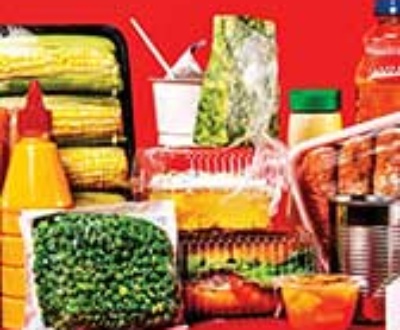It’s sum sum sum summer time!!! I’m writing this mid June and the mango season is fabulous. I’m picking up 7-8 mangoes every morning – big ones – yellow with a rose blush. My go to is blueberry mango smoothie — freeze one cup blueberries add one mango — with one cup kefir and 1⁄2 cup plain soy milk, yum. The Royal Poinciana and Golden Shower trees are just magnificent and the Venetian Pool is delicious as always. All good.
Lets Talk About Fabulous Fungi
 First, for sure, if you have Netflix you need to watch two movies — Kiss the Ground and Fantastic Fungi. You will have a much better understanding of the importance of what is under our feet for a three hour investment!! Even more important you will start to understand why messing with the soil with pesticides and fertilizers is detrimental to the health of the soil – it interferes with the normal processes that take place underground. And hopefully you will understand that you need to stop these harmful practices. Fungi made the world as we know it. As some of the first life forms on the planet, they consumed the minerals locked in rocks, creating what we now know as soil. Without them there would be no plants on land and therefore no animals. No us. Yet so little is known about fungi that they are not even counted in the Convention on Biodiversity, a global treaty aimed at protecting nature. That treaty is aimed at plants and animals. Fungi are neither. They make up a separate kingdom of life altogether.
First, for sure, if you have Netflix you need to watch two movies — Kiss the Ground and Fantastic Fungi. You will have a much better understanding of the importance of what is under our feet for a three hour investment!! Even more important you will start to understand why messing with the soil with pesticides and fertilizers is detrimental to the health of the soil – it interferes with the normal processes that take place underground. And hopefully you will understand that you need to stop these harmful practices. Fungi made the world as we know it. As some of the first life forms on the planet, they consumed the minerals locked in rocks, creating what we now know as soil. Without them there would be no plants on land and therefore no animals. No us. Yet so little is known about fungi that they are not even counted in the Convention on Biodiversity, a global treaty aimed at protecting nature. That treaty is aimed at plants and animals. Fungi are neither. They make up a separate kingdom of life altogether.
You Know Fungi by Their Fruit
 You know fungi by their fruit—the mushrooms above ground that spread their spores to the wind. If you see mushrooms in your yard–rejoice because that means you have very healthy soil with the mycorrhizal fungi clinging to the roots of your plants!! This type of fungi is in a symbiotic relationship with the plants. The fungi give the plants much needed nutrients extracted from the soil. In exchange the plants give the fungi carbon they’ve pulled from the air by photosynthesis. Fungi need carbon to grow. The fungi form a network of white filaments underground that connects plants. Carbon travels one way and nutrients like nitrogen and phosphorus the other. This underground entanglement is vital to life above.
You know fungi by their fruit—the mushrooms above ground that spread their spores to the wind. If you see mushrooms in your yard–rejoice because that means you have very healthy soil with the mycorrhizal fungi clinging to the roots of your plants!! This type of fungi is in a symbiotic relationship with the plants. The fungi give the plants much needed nutrients extracted from the soil. In exchange the plants give the fungi carbon they’ve pulled from the air by photosynthesis. Fungi need carbon to grow. The fungi form a network of white filaments underground that connects plants. Carbon travels one way and nutrients like nitrogen and phosphorus the other. This underground entanglement is vital to life above.
The biodiversity of underground fungi is a huge factor in soil health, which is crucial to the world’s ability to feed itself. AND, by one estimate, 5 billion tons of carbon flow from plants to mycorrhizal fungi a year – carbon that otherwise would stay in the atmosphere. If you dump chemical fertilizers and pesticides on your soil you are damaging this natural network that creates healthy soil and healthy plants!
A Wealth Of Wetness
We here in South Florida know how people have approached swamps – DRAIN IT!
Plant sugar cane on it or houses. But lately humans have begun to realize what swamps and wetlands do for the planet. It’s taken a long time. By the 1980’s about half of America’s wetlands had been wiped out. It is in and around wetlands that the greatest blossoming of biodiversity has occurred.
 A swamp is different from a marsh, in addition to water there are trees and shrubs. Many people vaguely understand that wetlands cleanse the earth. In fact, they are carbon sinks that absorb CO2 and they are unparalleled at filtering out human waste, material from rotten carcasses, chemicals and other pollutants. They recharge underground aquifers and sustain regional water resources.
A swamp is different from a marsh, in addition to water there are trees and shrubs. Many people vaguely understand that wetlands cleanse the earth. In fact, they are carbon sinks that absorb CO2 and they are unparalleled at filtering out human waste, material from rotten carcasses, chemicals and other pollutants. They recharge underground aquifers and sustain regional water resources.
Wooded swamps are the end state of the fen-bog-swamp legacies of the Ice Age. As the ice melted first came giant lakes then the melt turned much of the North American continent into wet ground, with long chains of swamps gouged by glaciers. The great Southern coastal swamps of the United States are treasures of the natural world. Some are preserved as wildlife refuges or parks. Swamps and birds go together as swamps disappear so do birds.
The prince of Southern swamps is the Okefenokee which contains up to 25 feet of peat deposits, a mosaic of lakes, shrub bogs and cypress heads and bays with live oak hammocks, large wading birds and alligators. When was the last time that you went out and enjoyed our wonderful Everglades—Shark Valley is only a half hour drive and another world from Miami!!!
4 Free Apps Can Help You Identify Every Flower, Plant, Bird and Tree
 Be sure and take these apps when you decide to explore the Everglades!! Human beings in the industrialized world are becoming an indoor species! 90% of their time is spent indoors. Nature is even disappearing from our books, songs and culture say researchers who looked at nature related words in popular works in the mid 20th Century. Our mental and physical health is affected by our estrangement from outdoors.
Be sure and take these apps when you decide to explore the Everglades!! Human beings in the industrialized world are becoming an indoor species! 90% of their time is spent indoors. Nature is even disappearing from our books, songs and culture say researchers who looked at nature related words in popular works in the mid 20th Century. Our mental and physical health is affected by our estrangement from outdoors.
These four apps, designed and managed by scientists with world class data, meet all your identification requirements free of charge. First is Seek, It lets you shoot live video and automatically identifies the plants and animals you shoot. Next is iNaturalist and Pl@ntNet. These give you more detailed descriptions of the things you are seeing and last but NOT LEAST is MerlinBirdID, a project of the Cornell Lab of Ornithology. It’s like magic, the app recognizes bird songs and tells you who is singing. ENJOY!
About the Author

Linda Lawrence Waldron currently writes the Green Gables column in Gables Living Magazine. Linda was Chairman of the Garden Club's Coral Gables Library Butterfly Garden Committee.
Sign up here for email notifications about new Green Gables articles!
More from our blogs
See all postsRecent Posts
- April 2023 April 1, 2024
- Good News on Environmental Plastics February 1, 2024
- Material World / Plant World January 1, 2024
Leave a Comment cancel
This site uses Akismet to reduce spam. Learn how your comment data is processed.









